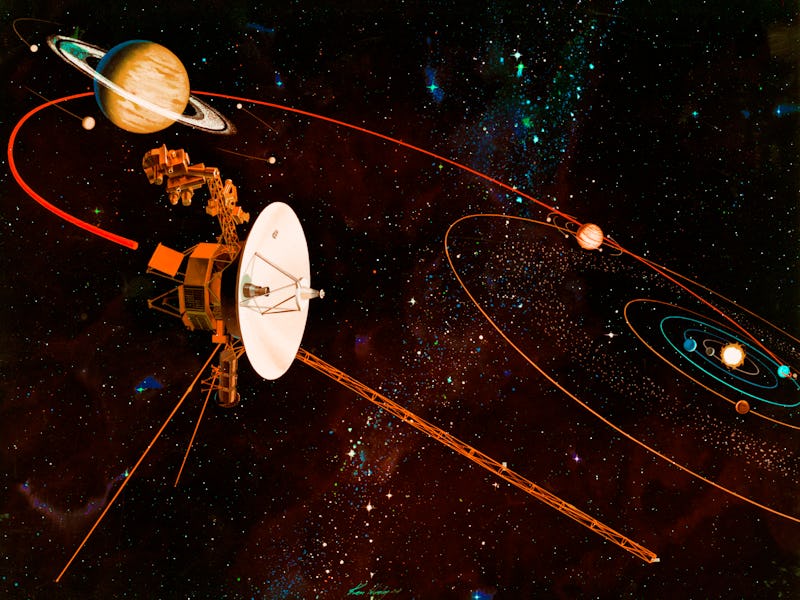Voyager 1 Spacecraft Just Shut Off Its Main Transmitter And Switched To A Long-Abandoned Signal
The old transmitter sends home a faint, almost ghostly signal from 15 billion miles away in the dark.

A software glitch is making NASA’s Voyager 1 spacecraft act a little bit haunted this Halloween season.
On October 17, Voyager 1 switched its main radio transmitter to a different frequency, leaving its flight team at NASA’s Jet Propulsion Laboratory confused at the spacecraft’s apparent silence. As soon as the team figured out the problem and started listening for the new frequency, Voyager 1 shut off its main transmitter and switched over to one that hasn’t been used since 1981 — one that sends home a faint, almost ghostly signal from 15 billion miles away in the dark.
Voyager 1 is the spacefaring version of a spooky old house where doors sometimes open and close on their own, but there’s no reason to be frightened. Probably.
Definitely Not Space Ghosts, We Promise
NASA says a command that the flight team sent to Voyager 1 on October 16 somehow tripped the spacecraft’s Fault Protection System, whose job is to shut off systems — or switch to backups — if Voyager 1 draws too much power or otherwise seems to be in danger. The flight team just wanted to turn on one of Voyager 1’s heaters, but for reasons currently known only to the computer that runs the Fault Protection System, that command prompted the system to switch the spacecraft’s X-band transmitter to a lower-power mode, which sends home data less often and on a different frequency than usual.
It takes about 23 hours for a message from Earth to reach Voyager 1, and another 23 hours for the spacecraft’s reply — a stream of engineering data that describes how Voyager 1’s systems responded to the instructions — to reach Earth. So the flight team’s first clue that something was wrong came when they didn’t hear from Voyager 1 two days later, on October 18.
“Voyager 1 should have had ample power to operate the heater,” says NASA in a recent statement, which sounds a lot like a character in a horror movie pointing out that the lights in the haunted house shouldn’t have just switched off on their own.
It took the flight team’s engineers less than a day to figure out what had happened and start listening for Voyager 1’s signal on its new frequency. Everything seemed stable, NASA reports, and engineers started trying to work out why the Fault Protection System had ever thought otherwise. And then Voyager 1 went eerily silent again.
On October 19, Voyager 1’s signal vanished again. Somewhere out in the empty darkness of space, on October 18, the Flight Protection System had apparently switched off the X-band transmitter entirely and switched to the long-abandoned S-band transmitter: a backup radio transmitter that Voyager 1 hasn’t even turned on since 1981. The S-band transmitter uses less power, transmits on a different band of frequencies than the X-band, and sends a “significantly fainter” signal. So when the flight team finally tracked down which channel Voyager 1 was talking on, they discovered that its “voice” was faint — almost ghostly, even.
NASA says the flight team is using the S-band transmitter to communicate with Voyager 1, hoping to figure out what caused the Flight Protection System to start playing tricks on them. The goal is to switch back to the X-band and get back to normal, but that’s ultimately up to Voyager 1 — which would totally have gotten away with all of this if it weren’t for those meddling engineers.